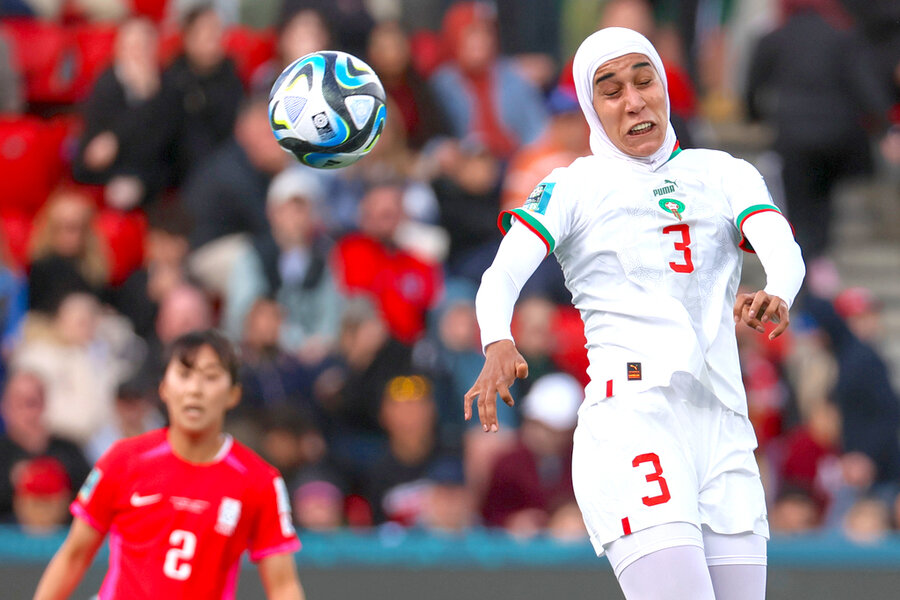Hijab or no hijab, peace reigns in women’s soccer
Loading...
Since its soccer matches began in July, the FIFA Women’s World Cup has seen many firsts. The biggest one may be this: Nouhaila Benzina, a player on Morocco’s team, was the first woman to wear a hijab on the pitch. Just a decade ago, Islamic head covering was banned by FIFA. Now, since the ban was lifted in 2014, Ms. Benzina’s choice to wear a hijab during a game has revealed a newfound respect for religious minorities, at least in global sports.
To some degree, her courage will help push back against widespread and often-violent discrimination against people of faith – or no faith – in many countries. “Seeing hijabs represented at such a high level will allow other countries to see that I’m not an oppressed person who wears a headscarf,” Yasmin Rahman, a soccer player for Saltley Stallions in Birmingham, England, told the BBC. “You want everyone to be accepted as they are.”
In many societies with religious diversity, that desire for peaceful inclusion runs deep. In June, it was expressed in a unanimous vote by the United Nations Security Council. The 15-member body passed a resolution asking countries to improve their interreligious dialogue in order to help end religious hate. The resolution also requires the U.N. secretary-general to report next year on how impingements on religious freedom are threats to international security.
In a sign of how attitudes have changed, Ms. Benzina did not even speak about her breakthrough moment after her team played its debut game in Australia. Her religious expression, the hijab, was for her to judge. She spoke to the media only about the game she had played and the games ahead for her team. Her religious freedom in the sport she loves was just accepted as a fact, just as she accepted other players who were not wearing a hijab. Peace is made from such respect.







